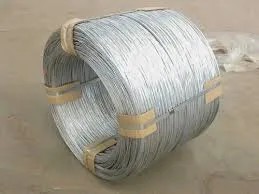spike wire
Understanding Spike Wire Applications, Benefits, and Considerations
Spike wire, often referred to as barbed wire or spiked fencing, serves as a crucial tool in various security and agricultural applications. Its distinctive design, characterized by metal spikes or barbs that protrude from the wire, makes it an effective deterrent against unauthorized entry and animal trespassing. This article aims to explore the properties of spike wire, its applications, benefits, and the considerations to keep in mind when using it.
Composition and Design
Spike wire is typically made from galvanized steel, which provides durability and resistance to rust and corrosion. The barbs or spikes are evenly spaced along the wire, allowing for a formidable barrier. The design of spike wire can vary, with some versions featuring thicker spikes for increased security, while others may have smaller, more closely spaced barbs, making it suitable for keeping out smaller animals.
Applications of Spike Wire
1. Security Fencing One of the most common uses of spike wire is in security fencing for industrial sites, warehouses, and military installations. Its intimidating appearance and sharp barbs effectively deter trespassers and can complement other security measures, such as surveillance cameras and motion sensors.
2. Agricultural Uses Farmers use spike wire to protect crops and livestock. It prevents wild animals, such as deer and feral pigs, from entering fields and consuming valuable crops. For livestock, spike wire can create boundaries that keep animals safe and secure within designated areas.
3. Residential Fencing Homeowners sometimes choose spike wire as a means of ensuring their property's security. It can be especially useful in rural areas or regions with higher crime rates. Additionally, spike wire can be incorporated into existing fences to heighten security without extensive construction.
4. Military and Correctional Facilities Due to its deterrent nature, spike wire is an especially popular choice in high-security environments, such as military bases and correctional facilities. The presence of spike wire makes escape attempts significantly more difficult for inmates and unauthorized personnel.
Benefits of Spike Wire
1. Effective Barrier The primary benefit of spike wire is its efficacy as a barrier. The risk of injury from sharp barbs effectively dissuades animals and individuals from attempting to breach the fence.
spike wire

2. Cost-Effective Security Solution Compared to other security measures, spike wire is relatively inexpensive to install and maintain. This makes it an attractive option for individuals and organizations looking to secure their properties without large financial investments.
3. Versatility Spike wire can be adapted to various uses and environments. It can be paired with other fencing materials, such as wooden or chain-link fences, to bolster security.
4. Low Maintenance Once installed, spike wire requires minimal upkeep. The galvanized finish ensures that it withstands the elements, extending its lifecycle and reducing the need for frequent repairs or replacements.
Considerations When Using Spike Wire
Despite its advantages, there are some considerations to keep in mind when using spike wire.
1. Ethical Implications The use of spike wire must consider the safety of not only intended targets, like trespassers but also unintended ones, such as small animals or pets. Responsible placement is essential to minimize risks.
2. Local Regulations Before installation, it’s crucial to check local regulations regarding fencing. In some regions, there may be restrictions on the use of spike wire, particularly in residential areas.
3. Aesthetic Concerns While spike wire offers strong security advantages, its appearance may not align with the desired aesthetic for some homeowners. It can create a stark, unwelcoming environment.
4. Potential Legal Issues If injuries occur due to spike wire, property owners might face legal challenges, especially if the installation poses undue harm to others. It’s advisable to consult with legal professionals to ensure compliance with local laws.
Conclusion
Spike wire serves as an effective means of securing property, whether for agricultural, residential, or high-security needs. Its design and composition allow for significant deterrence against unauthorized access. However, ethical considerations, local regulations, and potential legal ramifications must be taken into account. With responsible use and careful planning, spike wire can provide an efficient solution for a variety of security challenges.
-
Space-Saving Chain Fence Hacks Vertical Gardening with Cyclone MeshNewsJul.16,2025
-
Innovations in Iron Nail Wire Production for Modern ConstructionNewsJul.16,2025
-
Creative Uses of Wire Netting Fence in Modern Landscape DesignNewsJul.16,2025
-
Barbed Wire Fence Innovations in Anti-Climb TechnologyNewsJul.16,2025
-
Architectural Uses of Umbrella Nails for Aesthetic Roof DesignsNewsJul.16,2025
-
Architectural Uses of Razor Barbed Wire in Secure Urban DesignNewsJul.16,2025




